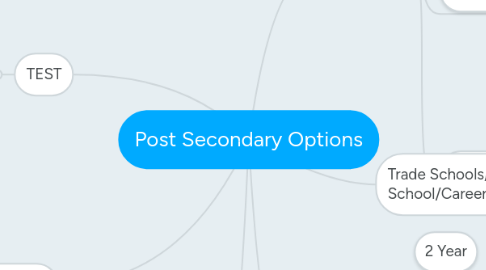
1. Degrees
1.1. Undergraduate/ Associates Degree
1.1.1. Two years
1.2. Undergraduate/Bachelor Degree
1.2.1. Four to five years
1.3. Graduate/Doctortrate Degree
1.3.1. 11 years of more
1.4. Graduate/Master Degree
1.4.1. Advance degrees after completing Bachelor's degree: Approx. 8 years or less
1.5. Professional Degree
1.5.1. Licensed professionals, an expert at a certain area like medicine. Ex. M.D
2. Admission/Applications acceptance
2.1. All college needs application of your information usually information of: Test scores, recommendation, and previous academic records.
2.2. If the college, university or school sees you fit in a positive manner, then you're likely to get accepted, receiving a letter from the school.
3. TEST
3.1. SAT Test
3.1.1. Score based on correct answers wit no penalty of guessing
3.2. ACT Test
3.2.1. Made of 5 components: Mathematics, English, Science, Reading and an optional writing test.
4. University
4.1. 2 Year
4.2. 4 Year
4.3. More than four years
4.4. Bigger classes, often more focused on Scholar and Scientific Research.
5. Colleges
5.1. Community College
5.1.1. Public
5.1.2. Offers Associate Degree: 2 years
5.2. Trade/Vocational/Career/Technical School
5.2.1. 2 years or less
5.2.2. Specialized/ focused school: As in skills
5.3. Junior College
5.3.1. A school that prepares for a 4 year college.
5.3.2. Usually private
5.3.3. After two years Junior colleges transfer students to four year colleges
5.4. Tuition
5.4.1. The amount paid for each credit hour of enrollment. Colleges vary
5.4.2. If you're lucky to get FAFSAS, then Financial Aid will either make loans to you, pay your tuition or pay your school fees.

